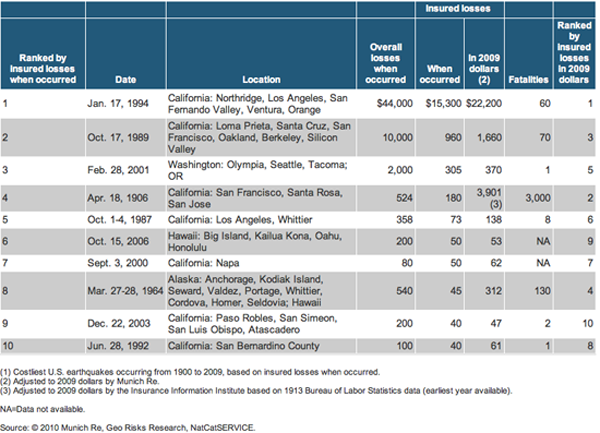Last Wednesday I blogged about the Chilean earthquake costing insurers up to $8 billion. That number has since been revised by Swiss Re — the world’s second largest reinsurer claims the impact on the sector would be between $4 and $7 billion.
Swiss Re says “it’s own losses from last month’s 8.8 magnitude earthquake would total about $500 million.” Germany’s Munich Re has said it expects to lose about $543 million from the Chilean disaster.
Analysts said that while the losses were large, they were probably not sufficient to reverse recent falls in the prices reinsurance companies charge insurance firms to cover natural disasters such as earthquakes or hurricanes. “Although it will almost certainly lead to a change in reinsurance prices for business in that region, it is not an industry-changing event on its own,” said Helvea analyst Tim Dawson.
Economic recovery from an earthquake is easier when the affected area’s economy is a strong one. Chile’s successful copper production industry was unaffected by the quake. And even though it’s wine, fish and paper pulp industry took a small hit, it’s overall economic outlook remains strong. That economy is now in the hands of incoming President Sebastian Pinera who takes office today. The billionaire conservative businessman and Harvard-trained economist has a tough job ahead of him but many feel he is well-equipped.
The earthquake that struck Chile on February 27 was not the biggest natural disaster the country has faced. Below is a video of the record-breaking 1960 earthquake that registered 9.5 on the Richter scale, the largest recorded earthquake in history — killing approximately 1,655 and causing $550 million in damage. The ravaging tsunamis that followed caused 61 deaths and $75 million worth of damage in Hawaii. Damage was reported in Japan and the U.S. as well. It is the only earthquake known as an “international disaster.”

